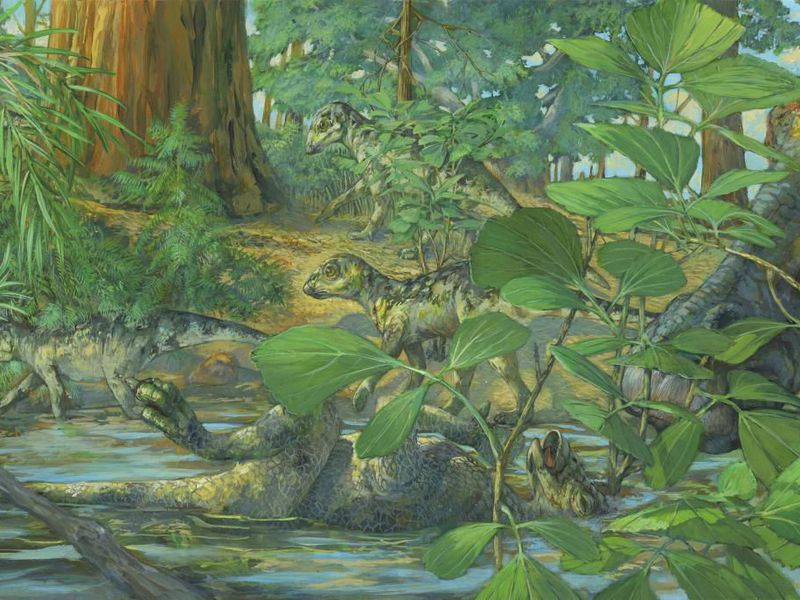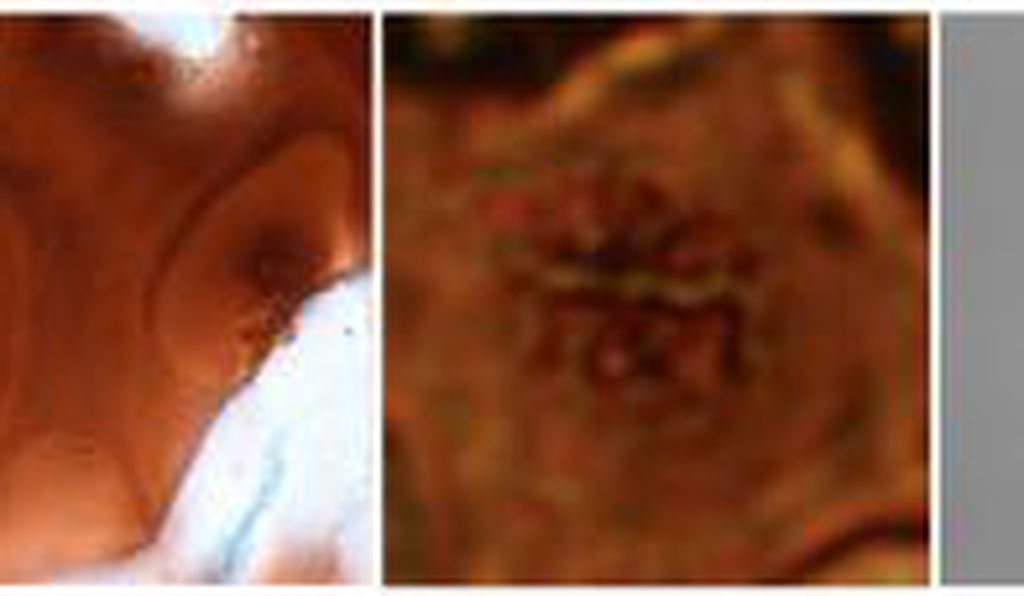@WFS,World Fossil Society,Riffin T Sajeev,Russel T Sajeev

Reconstruction of the nesting ground of Hypacrosaurus stebingeri from the Two Medicine formation of Montana. In the center can be seen a deceased Hypacrosaurus nestling with the back of its skull embedded in shallow waters. A mourning adult is portrayed on the right. (©Science China Press, Art by Michael Rothman)
About 75 million years ago, a nest of plant-eating dinosaurs called Hypacrosaurus stebingeri died in what’s now Montana. Their fossils were found in the 1980s, and now an international team of scientists has presented evidence that the old bones contain traces of genetic material.
The paper published in National Science Review takes a close look at skull shards that would have been made of soft cartilage, instead of bone, in the young dinosaurs. The discovery is small in size, but hugely controversial among paleontologists: what appears to be microscopic cells, the building blocks of complex life, with dark clumps in the middle. A zoomed-in look at one possible cell’s dark spot reveals what the researchers suspect is genetic material.
Study author Alida Bailleul, a paleontologist at the Chinese Academy of Sciences in Beijing, first found the microscopic orbs in 2010 while a student at the Museum of the Rockies, and quickly recognized their resemblance to cells. “I freaked out a little bit—moving away from the microscope, thinking, moving back to the microscope,” she tells Michael Greshko at National Geographic. “I was like, Oh my god, that can’t be, there’s nothing else they can be!”

Photographs of the suspected cells in the nestling’s skull fragment. On the left, it appears that two cells are dividing, and the dark region resembles a cell nucleus, where DNA is stored. In the middle, what appears like strands of DNA. On the right, dye fluoresces red indicating chemicals like DNA. (©Science China Press, Photo by Alida Bailleul and Wenxia Zheng)
After getting a second opinion from Mary Schweitzer, a paleontologist at North Carolina State University and first author on the paper, the team moved forward analyzing their find. It was surprising because tiny structures like cells and DNA—the molecular twisted-ladder that carries a cell’s blueprint—are notoriously fragile. High heat or acidity can destroy them, and so they require a lot of upkeep while an animal is alive, and when it dies, the delicate bits are at the whims of the environment.
If the researchers have found fossilized cells and DNA, they would be several tens of times older than both any found before, and the theoretical preservation limits of the materials, paleontologist Evan Saitta, who works at the Integrative Research Center at the Field Museum of Natural History in Chicago, explains to George Dvorsky at Gizmodo.
Cartilage lacks pores, so Bailleul and her colleages suggest that it may have defended the microscopic structures from the outside environment, the researchers say.
“Fossilized, calcified cartilage may be an ideal place to search for exceptionally preserved biomolecules in other fossils, as this tissue may be less prone to contamination and internal decay than bone,” Royal Ontario Museum paleontologist David Evans, who wasn’t involved in the new study, tells National Geographic. “In calcified cartilage, the cells become trapped and isolated in their matrix and are more likely to be preserved in a sealed micro-environment.”
To check their find, the researchers applied a dye to the fossils that sticks to DNA and fluoresces red. Then, they dyed living emu cells and compared the two. Although it was much fainter than the dye in the emu’s cells, the fossil’s dye stuck to something.
“I’m not even willing to call it DNA because I’m cautious, and I don’t want to overstate the results,” Schweitzer tells National Geographic. “There is something in these cells that is chemically consistent with and responds like DNA.”



 March 8th, 2020
March 8th, 2020  Riffin
Riffin  Posted in
Posted in  Tags:
Tags: 